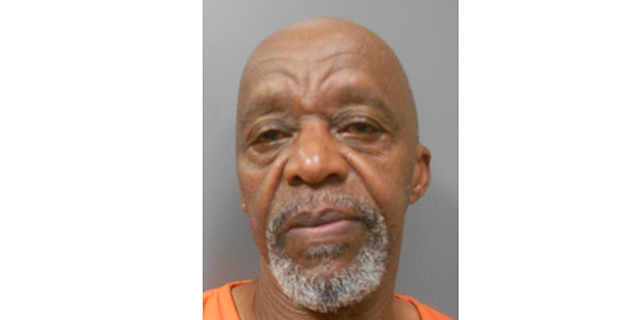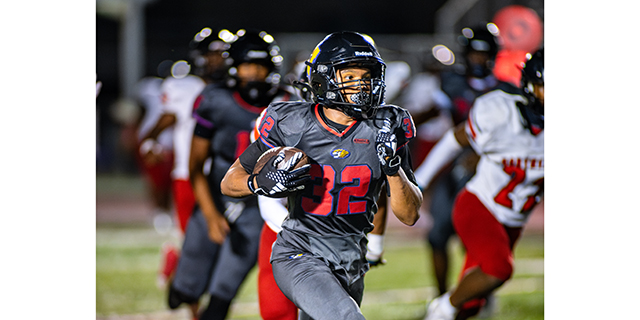Hidden Gems
Published 7:00 am Tuesday, July 3, 2018

- Hidden Gems
Locals Find WWII Memorabilia
By Patrice Doucet
The memories of war are painful for so many soldiers and consequently a history of service can be pushed to the backs of their minds – and closets, remaining still and unseen for decades, without any explanation for how they fit into our nation’s history. For two New Iberia families their findings from World War II were exciting and appreciated enough to share with the public.
Growing up in New Iberia, Lester Gonsoulin says his uncle Lloyd Porter Jr. never spoke of WWII, where he served in the 12th Air Force as a radio operator/waist gunner on a B25 Mitchell. Stationed for several months in the Mediterranean, he flew over axis targets in Tunisia, Pantelleria, and Sicily, Italy.
Decades later, pilfering through a hall closet at his grandmother’s, Gonsoulin found his uncle’s bomber jacket, stiff with age but still a prize of a discovery for a young man in his 30s. Admiring it, he asked if he could have it and his uncle agreed. “I was astounded to see it hanging in the closet after all those years,” says Gonsoulin, who softened it with saddle soap and wore it proudly. Later, the jacket was passed to a nephew and then, after some time, found its way into a closet again, until Gonsoulin found a permanent home for the historical piece by donating it to the National WWII Museum in New Orleans.
The jacket dates back to 1940 and, like most of its kind, the names of the plane is displayed on the back where it was hand painted. Porter’s plane was named “Boomerang” because they always returned from their mission. On the front were 50 small bombs stacked in rows of five, representing the number of bombing missions successfully completed without taking enemy fire, impressive considering not only the number of flights, but that some of the missions across the Mediterranean were five hours long.
Larry Decuers, a curator at the WWII Museum, says flight jackets represent the largest part of the museum’s combat-worn uniform collection. At present, there are about 60, each one unique, that are exhibited 10 at a time on the catwalks at the Boeing Center. “Mr. Porter’s jacket is one of the most beautiful jackets donated because of its good condition,” says Decuers.
Other items of Porter’s found, but kept by family members: a navigational map imprinted on parachute material and pictures of Porter in Egypt.
“I’m delighted that Uncle Lloyd’s jacket has been on display at the WWII Museum,” says Gonsoulin, who has seen it with family members several times since the donation. “I was honored that, after all of his life-harrowing experiences, the jacket could be viewed and represent what he’d done.”
Laura Trappey Broussard and her sister, of the Trappey family in New Iberia, are waiting for the day their WWII donation to the museum might be on exhibit. Given what they went through to find it, it would all be worth it.
They had finally undertaken the chore of sorting through their father’s belongings in his New Iberia home almost a year after his death. George Trappey Jr. was a man who never threw a thing away and Laura was not looking forward to the arduous task. Closets were at the bottom of the checklist; as expected, when Laura finally opened the door to one she was faced with stacks of mystery boxes.
As she took them home a couple at a time to purge through, she was mainly looking for keepsakes of the Trappey family history.
She was thrilled to find a family photo of the 10 Trappey brothers and surprised to discover newspapers from WWII – even though she knew her father was a navy officer stationed in Oahu, HI during the war as a coxswain – the person in charge of a boat’s steering and navigation. She donated the newspapers to the Jeanerette museum, which, at the time, didn’t have any historical display about the Trappeys, one of the city’s founding families.
And then one day, she experienced what archeologists must feel after weeks of tediously brushing away loose dirt from a dig site and finding the first significant piece of an historical artifact. She found pictures and documentation of an award she’d heard mentioned by her parents over the years: The War Food Administration’s Achievement “A” Award.
The Trappey family patriotism and service to their country led them to participate in the World War II “Food for Freedom” program, with the government taking over the family’s Lafayette plant in the early 40s. At the beginning of the war, the Trappey’s were offered government contracts to produce dehydrated sweet potatoes for the soldiers, which had been promoted as one of the finest foods for overseas shipment. The same dehydrator that had been used for drying cayenne and port peppers began working overtime dehydrating yams. The plant operated 24 hours a day with three crews. Dehydrated yams were shipped in boxes by rail cars to the Pacific, Europe and also fed the troops training in the U.S.
Trappey’s record food production efforts during the war resulted in their receiving the “A” Award. To the best of his knowledge, Randolph Trappey says the company was the only one in Louisiana to receive this award.
Although Broussard had taken her children and grandchildren to the WWII Museum when the LA Efforts section first opened, she looks forward to the day they can see her own family’s accomplishments on display. The museum normally calls a donor when their item will be on display.
James Linn, another curator at the WW II Museum, says they try to display as much as possible, but they accept about 10 percent of over 200 donations sent each month. War memorabilia collection tends to involve sifting the exceptions out of the rule. “We are always looking for artifacts with a good story,” says Linn.
Each item is reviewed on an individual basis by a collections committee. “We have to make sure it’s authentic WWII material,” says Linn, “and it boils down to just knowing what you’re looking for.” The National WWII Museum does not place its artifacts on permanent display. While many items are made part of the exhibit, many are kept safely in storage to be used for research and future exhibitions or are undergoing restoration.
In addition to displaying artifacts in the museum, the WWII Museum might also use them in traveling exhibits, short-term loan to other museums in the United States, and for research by historians, authors, documentary film producers and students. Broussard hopes the “A” Award can be part of a history lesson plan given to teachers by the WWII Museum so that Louisiana students can learn more about the role our state played in the war.
“I was glad to see the Trappey family, who fought for freedom, to be recognized for their efforts with the “A” Award. Among the 10 Trappey brothers, seven fought in WWI and two were involved in WWII. Three grandsons were also in WWII, including George Trappey Sr.
“Their story will be important for generations to come. The younger generations need to see WWII artifacts to see that freedom is not free and a generation of hard-working, brave men made sacrifices for Americans and for the liberties that we have today.”
The Pelican State Exhibit closed at the WWII Museum in New Orleans a couple of months ago and will be traveling around the state beginning in September in Shreveport.





